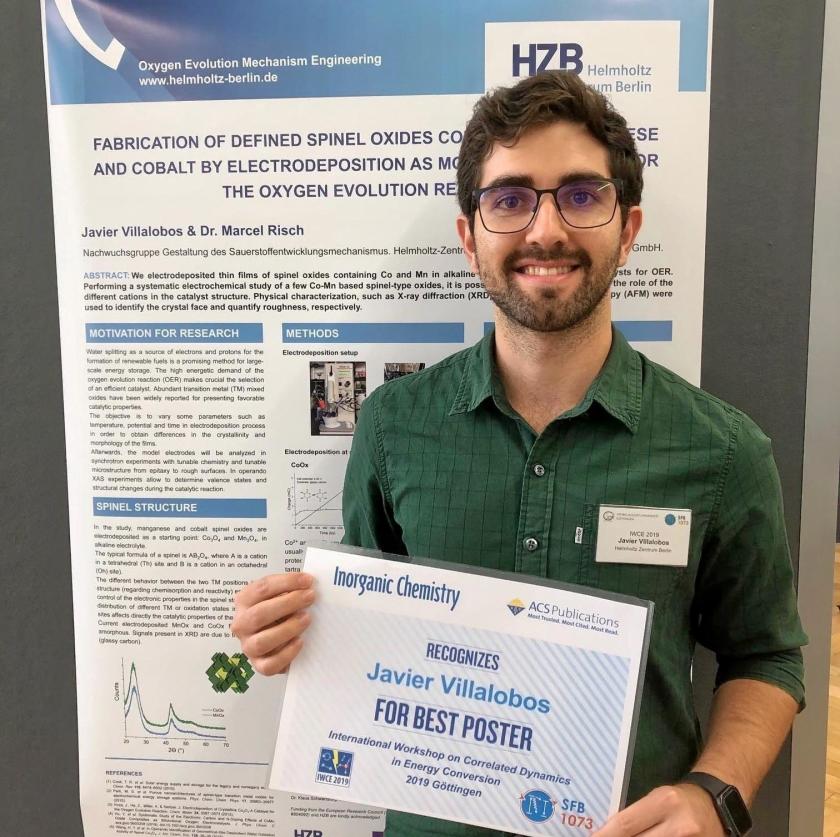Poster award for HZB doctoral student

Congratulation to Javier Villalobos from the Young Investigator Group
Oxygen Evolution Mechanism Engineering at HZB. © HZB
Javier Villalobos has been awarded for the best poster at the International Workshop on Correlated Dynamics in Energy Conversion (IWCE 19) in Göttingen. The doctoral student works in the young investigator group "Oxygen Evolution Mechanism Engineering". His research contributes to a better understanding of electrocatalytic oxygen evolution.
On his poster, Javier Villalobos presented first results on the electrochemical synthesis of spinel oxides, which can be used as catalysts for the oxygen evolution reaction. The title of his poster is "Fabrication of defined spinel oxides containing manganese and cobalt by electrodeposition as model electrodes for the oxygen evolution reaction".
The presented results are the first step towards developing a model system for systematic studies on such catalysts. It is crucial to deposit films with controlled composition and microstructure. These materials will soon be investigated using operando methods on BESSY II to better understand the known differences in activity.
"With his poster, Javier Villalobos laid the foundation for a better understanding of the oxygen evolution reaction in order to produce sustainable fuels based on water (e.g. hydrogen) more cheaply," explains Dr. Marcel Risch, supervisor of the project. Since March 2019, he has been setting up a young investigator group at HZB with a Starting Grant from the European Research Council (ERC).
(red)
-
A simpler way to inorganic perovskite solar cells
Inorganic perovskite solar cells made of CsPbI3 are stable over the long term and achieve good efficiencies. A team led by Prof. Antonio Abate has now analysed surfaces and interfaces of CsPbI3 films, produced under different conditions, at BESSY II. The results show that annealing in ambient air does not have an adverse effect on the optoelectronic properties of the semiconductor film, but actually results in fewer defects. This could further simplify the mass production of inorganic perovskite solar cells.
-
BESSY II: How pulsed charging enhances the service time of batteries
An improved charging protocol might help lithium-ion batteries to last much longer. Charging with a high-frequency pulsed current reduces ageing effects, an international team demonstrated. The study was led by Philipp Adelhelm (HZB and Humboldt University) in collaboration with teams from the Technical University of Berlin and Aalborg University in Denmark. Experiments at the X-ray source BESSY II were particularly revealing.
-
Fuel Cells: Oxidation processes of phosphoric acid revealed by tender X-rays
The interactions between phosphoric acid and the platinum catalyst in high-temperature PEM fuel cells are more complex than previously assumed. Experiments at BESSY II with tender X-rays have decoded the multiple oxidation processes at the platinum-electrolyte interface. The results indicate that variations in humidity can influence some of these processes in order to increase the lifetime and efficiency of fuel cells.
